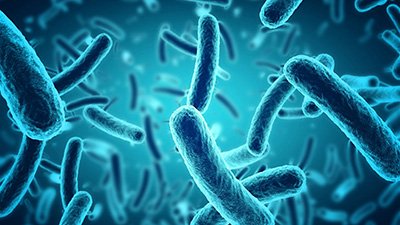DNA’s Sweet Secret: Its Sculptor!
The Vanderbilt University Medical Center Reporter recently reported the latest findings on the origin of DNA, which in essence is a search for the origin of life. Vanderbilt biochemist Dr. Martin Egli has spent thirteen years searching for the reason that DNA and RNA have molecular backbones built of five-carbon sugars instead of six-carbon sugars like glucose. The article’s opening statements are worth quoting:
DNA’s simple and elegant structure…seems to be the work of an accomplished sculptor. Yet the graceful, sinuous profile of the DNA double helix is the result of random chemical reactions in a simmering, primordial stew. Just how nature arrived at this molecule and its sister molecule, RNA, remains one of the greatest—and potentially unsolvable—scientific mysteries.1
Dr. Egli adds, “These molecules are the result of evolution. Somehow they have been shaped and optimized for a particular purpose.”2
DNA is the genetic blueprint present in all living cells. Each DNA molecule is constructed like a twisted ladder. The rungs of the ladder contain coded information in the form of four different nitrogen-containing bases. The rails of the ladder are made of alternating sugar and phosphate units. Our DNA, which would stretch to a thin strand about six feet long if unfurled, must twist itself up tightly enough to fit into the nucleus of each human somatic cell, which itself is too small to see without a microscope.
The bases, which make up the rungs of the ladder, can be thought of as the alphabet of life. To copy itself, the DNA ladder must split down the middle, and each base (“rung”) gets paired with a matching base. The bases follow strict pairing rules to minimize “spelling errors” and consequently maintain great precision in the transmission of information to the next generation. (Such “spelling errors” are called mutations.)
Each of the cells in that baby contains a copy of that DNA with all the information to operate the human body for a lifetime.
The various arrangements and combinations of these “letters” in DNA provide all the information needed to instruct a single human fertilized egg to grow, multiply, and shape itself into a fully recognizable baby. Each of the cells in that baby contains a copy of that DNA with all the information to operate the human body for a lifetime. DNA is the most compact information storage system in the world; no computer of human invention can approach the quantity and complexity of information it contains.
DNA even contains the instructions to devise the cellular machinery to decode its instructions. Without a mechanism to decode the information, the DNA blueprint would be useless. Even if DNA had managed to evolve, as Egli believes, the decoding mechanism to read it would have had to evolve at precisely the same time. This scenario is impossible because the instructions for building the decoding unit are contained in the DNA itself.
Dr. Egli’s research focuses, not on the information-containing bases which form the rungs of the ladder, but on the sugars which form the legs or rails of the ladder. By studying a synthetic alternative to DNA built with a different sugar, Egli hopes to determine how nature randomly selected the sugar DNA actually contains. He studies the performance of the counterfeit to determine how well it could function. The myriad of other problems inherent in the assumption that the entire “DNA double helix is the result of random chemical reactions in a simmering, primordial stew” are not even considered; evolution is simply assumed to have happened.
Nevertheless, Dr. Egli’s findings are interesting, suggesting that the “accomplished sculptor” made an excellent choice. The artificial DNA substitutes a 6-carbon sugar for the usual 5-carbon sugar, deoxyribose (the sugar for which the complex DNA molecule is named). On the one hand, the synthetic DNA is actually more stable than genuine DNA, a characteristic which might make it less prone to deterioration, damage, and mutation. On the other hand, the synthetic DNA’s sugar-substitution disrupts the strict pairing rules for the information-carrying rungs, so the code becomes unable to copy itself accurately. Furthermore, the simple addition of one extra carbon atom in each sugar makes the molecule too bulky to twist tightly and to line up for proper copying. In other words, such a substitution would render the DNA completely useless for transmitting genetic information from one generation to the next.3
The article concludes:
The new insights provided by this structure lie at the heart of the most fundamental of scientific inquiries—the origin of life on Earth. If the pieces of DNA and RNA hadn’t come together just so, life as we know it would not exist.Marino, “Investigator Seeks to Uncover Roots of DNA’s ‘Sweet’ Secret.”
Herein lies a fundamental misunderstanding of the purpose and potential of science. Scientific inquiry properly involves the investigation of processes which are observable, testable, and repeatable. The origin of life on earth cannot be observed, tested, or repeated because it happened in the past.
Indeed, even if the DNA and RNA had come together just so, the remainder of the cellular machinery to interpret the information would have been unavailable until the machinery itself had been built according to the instructions. The problem is a vicious cycle; the only solution lies in the sudden appearance of a fully functional organism with all necessary machinery and information in place, without the necessity of millions of years of trial and error required by molecules-to-man evolution.
The master “sculptor” doesn’t just “seem” to be at work here; He is the essential answer to the puzzle! The origin of life is a matter of history; history can only be known by eyewitness accounts. The Bible is the recorded eyewitness account provided by the Architect of the universe, the Creator of all life. The Bible is not in conflict with observable science but rather is consistent with it. As the history book of the universe, the Bible not only tells about the origin of life but also the origin of death. Since death is a fundamental issue we all face, the answers provided in the Bible should be of interest to everyone. How tragic that the presupposition that life had to have come from a “simmering, primordial stew” despite abundant evidence to the contrary should blind anyone to the real fundamental inquiries of life.
Footnotes
- Melissa Marino, “Investigator Seeks to Uncover Roots of DNA’s ‘Sweet’ Secret,” The Reporter, September 29, 2006, http://www.mc.vanderbilt.edu/reporter/index.html?ID=5043.
- Ibid.
- The synthetic DNA is also unable to be utilized for protein synthesis because it cannot be copied to RNA.
Recommended Resources

Answers in Genesis is an apologetics ministry, dedicated to helping Christians defend their faith and proclaim the good news of Jesus Christ.
- Customer Service 800.778.3390
- Available Monday–Friday | 9 AM–5 PM ET
- © 2026 Answers in Genesis





